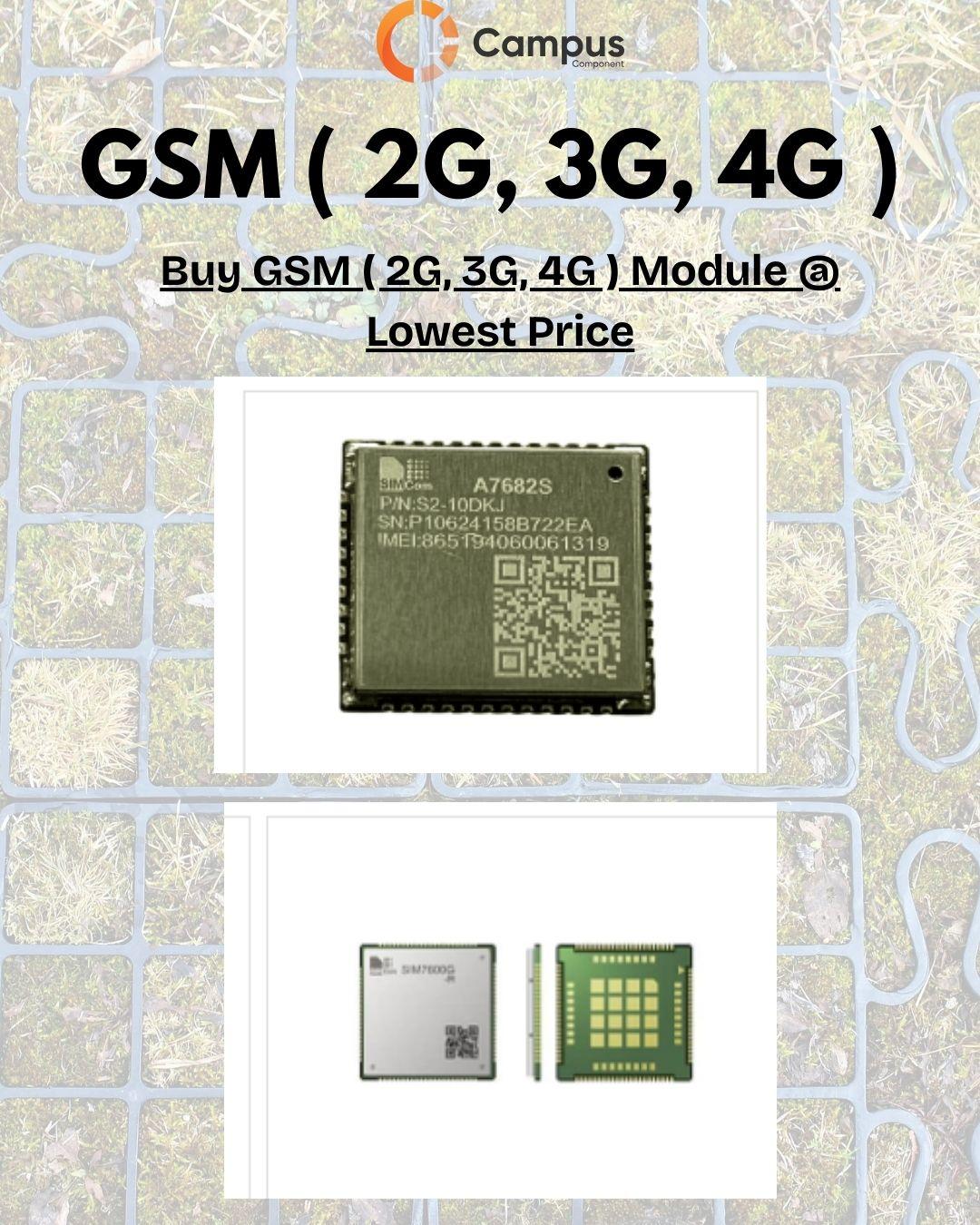The 4G module has become a cornerstone of modern communication and IoT systems, providing high-speed internet connectivity to a vast range of embedded applications. Whether in smart city solutions, remote monitoring devices, or vehicle tracking systems, 4G modules play an integral role in ensuring seamless and reliable wireless communication. As the world shifts towards more connected systems, these modules are becoming indispensable for both industrial and consumer-based electronics. Available through Campus Component, a trusted provider of advanced electronic components, 4G modules are designed to meet the high-performance demands of today’s developers and engineers.
What is a 4G Module?
A 4G module is a communication device embedded into a circuit or product that allows access to 4G LTE networks. These modules offer higher data transfer rates compared to 2G and 3G counterparts, enabling faster uploads and downloads, improved latency, and greater network stability.
In embedded systems, a 4G module connects the device to the internet or a cloud service. It supports multiple frequency bands, GPS functionalities, and advanced data encryption for secure communication. Common use cases include industrial IoT, smart metering, telematics, home automation, and digital signage.
Features of 4G Modules
1. High Data Speeds
4G modules provide data speeds up to 150 Mbps download and 50 Mbps upload, depending on network support. This is crucial for real-time applications such as video surveillance and vehicle tracking.
2. Global Band Support
Most modern 4G modules support multiple LTE bands, making them suitable for deployment across different countries without hardware changes.
3. Embedded GNSS Capabilities
Many 4G modules include built-in GNSS (Global Navigation Satellite System), enabling accurate location tracking. This feature is widely used in ESP32 GPS applications, where real-time location data is vital.
4. Compact and Power-Efficient Design
With miniaturized designs, 4G modules can be integrated into compact embedded systems while maintaining low power consumption, making them ideal for battery-powered devices.
5. Multiple Interfaces
Standard communication interfaces like UART, USB, and SPI allow easy integration with microcontrollers and embedded boards.
Applications of 4G Modules
Industrial IoT
Factories and industries use 4G modules to collect and transmit machine data to cloud platforms for analytics and monitoring. These modules enable predictive maintenance and efficiency optimization.
Smart Agriculture
From soil moisture sensors to weather monitoring devices, 4G modules enable real-time data access in agriculture, even in remote locations, facilitating smart farming techniques.
Transportation and Telematics
Vehicle tracking, fleet management, and intelligent transport systems rely on 4G modules for constant connectivity. Combined with GPS and onboard diagnostics, these systems provide comprehensive monitoring.
Home Automation
Smart thermostats, alarm systems, and video doorbells integrate 4G modules to ensure users can monitor and control their devices from anywhere.
Benefits of Using 4G Modules
1. Reliable Connectivity
4G networks offer more consistent service compared to 2G and 3G. The improved connection ensures devices stay online, reducing downtime.
2. Low Latency
Low latency is essential for mission-critical applications like medical devices or emergency communication systems.
3. Scalability
As businesses expand, more devices can be added without network congestion, making 4G modules a future-proof solution.
4. Cost-Effective
With declining data costs and affordable hardware, implementing 4G solutions has become financially viable for many applications.
Key Considerations Before Choosing a 4G Module
Compatibility with Networks
Ensure the module supports the bands and frequencies used in the deployment region.
Power Requirements
For devices relying on batteries or using a dual regulated power supply, choosing a module with low power consumption is crucial to prolong device life.
Form Factor
Depending on the project, different module sizes (like mini PCIe, LGA, or M.2) might be more suitable.
Security Features
Modules with built-in VPN support, encryption, and secure boot features help protect sensitive data.
Integration with Embedded Systems
Integrating a 4G module into an embedded project requires careful planning regarding hardware and software interfaces. For example, an ESP32 GPS system can be paired with a 4G module for enhanced tracking and cloud-based updates. The ESP32 handles sensor data and communication protocols, while the 4G module provides internet access.
Moreover, a stable dual voltage power supply is often needed to manage the power demands of both the microcontroller and communication module. This ensures uninterrupted operation and minimizes risk from voltage fluctuations.
Modern Innovations and the Role of 4G in IoT
The adoption of 4G modules has accelerated the growth of smart infrastructure and Industry 4.0. Devices powered by 4G connectivity offer greater mobility, faster deployment, and centralized control. In construction projects, for instance, IoT sensors utilizing 4G modules monitor equipment usage, fuel consumption, and on-site conditions. This real-time insight helps optimize operations and ensure safety.
Innovations such as construction and working of BLDC motor technology are also benefiting from 4G modules. When combined with wireless communication, these motors can be remotely monitored for temperature, speed, and performance, enhancing preventive maintenance.
Why Choose Campus Component for 4G Modules?
Campus Component offers a wide range of 4G modules from reputable manufacturers, ensuring high-quality performance and compatibility with global standards. Whether you're developing a prototype or deploying a full-scale IoT solution, their product catalog includes:
-
LTE CAT1, CAT4, and CAT-M1 modules
-
Modules with GNSS support
-
Modules with industrial temperature range
-
USB and UART interfaces
-
Development boards for faster prototyping
Moreover, their customer support and technical documentation help streamline the integration process, making it easier for engineers to implement 4G technology in their applications.
Conclusion
4G modules are redefining the way devices communicate in the IoT landscape. Their high-speed connectivity, reliable performance, and adaptability make them a fundamental building block for modern embedded systems. From smart agriculture to industrial automation, the versatility of 4G modules enables seamless data exchange and remote access, pushing the boundaries of innovation.
Campus Component stands out as a premier source for high-quality 4G modules, supporting developers with a robust inventory and expert guidance. Whether you’re working on an ESP32 GPS project or developing equipment powered by a dual voltage power supply, integrating a 4G module can significantly enhance functionality, efficiency, and user experience.

